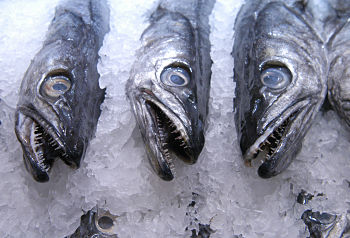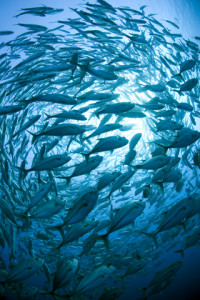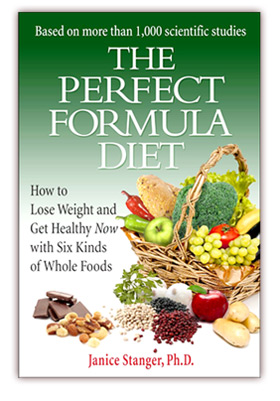Raw Fish and Raw Milk Are Not Healthy
Upbeat myths have boosted the image of raw animal foods, such as sushi, sashimi, and raw dairy products. Claims that these foods are somehow more “natural” and nutrient-rich than after they are cooked promote this raw fad.
Yet uncooked animal foods can be so hazardous that even the U.S. Food and Drug Administration (FDA), which is hardly known for its aggressive protection of public health, warns the public forcefully to watch out. The higher risk of eating such foods includes getting infected with parasites and disease-causing microbes. Dairy and fish are unhealthy even when consumed pasteurized or cooked, but may take longer to do their damage. Infection hits fast, and is acutely unpleasant at best, life-threatening at worst.
Raw Fish Perils
The FDA last updated its Fish and Fishery Products Hazards and Control Guidance,

Even without parasites and food poisoning bacteria, is fish really that appetizing? Or are you eating it because you have been told it’s healthy?
a 476 page manual on the dangers of fish (however it is prepared) as food, in 2011. Most of the included concerns would be common to both raw and cooked fish, and are described in this sampling of chapters of the manual:
• Pathogens from the harvest area
• Parasites
• Natural toxins
• Scombrotoxin (histamine) formation
• Other decomposition-related hazards
• Environmental chemical contaminants and pesticides
• Methylmercury
• Aquaculture drugs
• Pathogenic bacteria growth and toxin formation as a result of time and temperature abuse
• Metal inclusion
• Glass inclusion
While these are certainly not all the potential dangers of eating fish, the FDA has made a good start!
Let’s see what the FDA has to say about parasites, quoting from the Hazards manual. “Parasites (in the larval stage) consumed in uncooked and undercooked seafood can present a human health hazard…Most of these parasites cause mild-to-moderate illness, but severe symptoms can occur. Roundworms may embed in the intestinal wall and cause nausea, vomiting, diarrhea, and severe abdominal pain and sometimes may penetrate the intestine. Tapeworms can cause abdominal swelling and abdominal cramps and may lead to weight loss and anemia…Some intestinal flukes may also migrate to and damage the heart and central nervous system.”
In case anyone is still not impressed, the FDA goes on to inform readers “A survey of U.S. gastroenterologists confirmed that seafood-borne parasitic infections occur in the United States with sufficient frequency to recommend preventive controls during the processing of parasite-containing species of fish that are intended for raw consumption.”
The manual then goes on to describe the various factors that determine the effectiveness of freezing to kill parasites in fish that will be eaten uncooked. For example, the FDA recommends freezing and storing the fish at minus 4 degrees Fahrenheit for at least seven days. Lower temperatures must be used if freezing is for

Freezing fish as described by the FDA is likely to kill all parasites, but is not guaranteed to. Plus if you are eating sushi, how do you know it was properly frozen?
a shorter period.
Note these temperatures are colder than most home freezers could achieve. Even if the extreme cold successfully kills all the worms, that means your sushi and sashimi still crammed with dead worms. Delicious and appetizing? For you to decide….
And what about microbes, which may survive freezing? The Hazards manual states “Of particular concern in seafood are the pathogenic forms of Listeria monocytogenes (L. monocytogenes), Vibrio vulnificus (V. vulnificus), Vibrio parahaemolyticus (V. parahaemolyticus), Vibrio cholera (V. cholera), Escherichia coli (E. coli), Salmonella spp., Shigella spp., Staphylococcus aureus (S. aureus), Clostridium perfringens (C. perfringens), Bacillus cereus (B. cereus), Campylobacter jejuni (C. jejuni), and Yersinia enterocolitica (Y. enterocolitica).”
You don’t need to be a microbiologist to see this long list contains some of the deadliest bacteria that cause food poisoning. Proper cooking helps guard against microbes, but sushi and sashimi lack even this layer of protection. As just one example, in May, 2015 over 50 people in 9 states were infected with salmonella linked to tuna sushi.
Raw Milk and Cheese Risks
Proponents hawk raw milk with wild promises, promoting it for curing everything from allergies and asthma to ear infections, cancer, and chronic inflammation. The problem is, these claims are pretty much based on individual testimonials and poorly-done studies.
In 2014, the American Academy of Pediatrics issued a policy statement condemning raw milk and milk products for pregnant women and children. Their policy statement advises “Raw milk and milk products from cows, goats, and sheep continue to be a source of bacterial infections attributable to a number of virulent pathogens…Efforts to limit the sale of raw milk products have met with opposition from those who are proponents of the purported health benefits of consuming raw milk products, which contain natural or unprocessed factors not inactivated by pasteurization. However, the benefits of these natural factors have not been clearly demonstrated in evidence-based studies and, therefore, do not outweigh the risks of raw milk consumption.”
The fact is that dairy, like fish, is not a healthy food, and eating it with an extra load
of pathogenic bacteria does not mitigate dairy dangers from other harmful substances it contains (such as estrogen and IGF-1, both hormones that promote cancer). While raw milk has a “natural” image, there is nothing natural about a human ingesting the breast milk of another species, raw or pasteurized.
If you enjoyed this post, you may want to read about some of the other dangers of eating fish.
Intrigued? Now you can use our Whole Foods Blog Finder to target informative, fun postings on whole foods, plant-based diets. Quick information at no cost!
Blog posting by Janice Stanger, Ph.D. Janice authored The Perfect Formula Diet: How to Lose Weight and Get Healthy Now With Six Kinds of Whole Foods, which shows you a plant-based eating plan that minimizes the dangers of parasites and bacteria from food, among its numerous other benefits.
Tags: FDA, food poisoning, parasites, raw cheese, raw fish, raw milk, sashimi, sushi, whole foods plant-based diet








